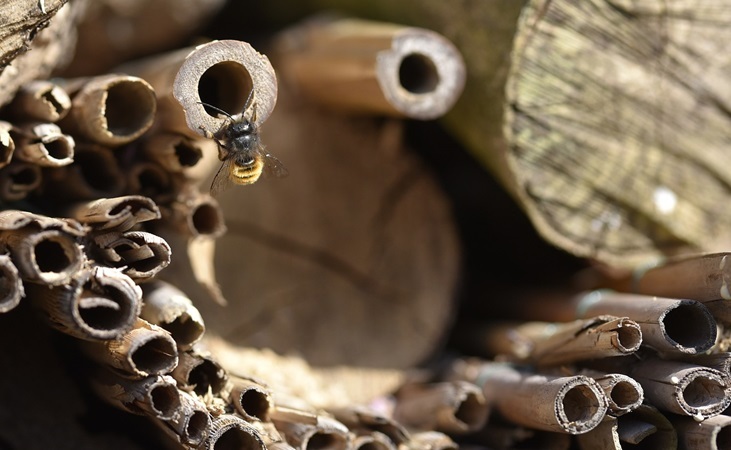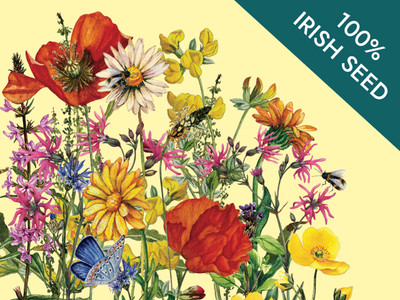Bee Friendly Gardening
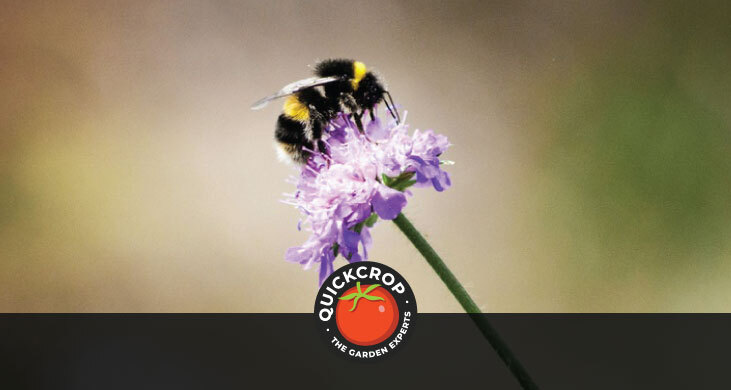
Bees are essential to the health of our ecosystems, food supplies and economies. These quietly industrious insects have a mutually beneficial relationship with countless wildflowers and food crops, spreading pollen from plant to plant as they forage for food. Overall, it’s estimated that bees are worth €53m a year to the Irish economy.
Healthy yields of crops such as apples, raspberries and tomatoes are heavily reliant on bee activity. Globally, bees contribute significantly to coffee plant pollination and yields, while almond crop production in the USA is almost entirely dependent on honeybees - to the point where rental hives are utilised each spring.
Bees as Pollinators
We often see bees flying from flower to flower and hovering over colourful blooms. There is, of course, a purpose to this: they are foraging for nectar and pollen. Generally, nectar (which bees convert into honey) provides them with carbohydrates and energy, while pollen supplies protein and other essential nutrients. Pollen is especially important for the growth and development of bee larvae.
As bees forage from flowerheads, pollen sticks to their body - particularly furrier bee species like solitary bees or bumblebees. As they move on to the next flower, some of that pollen brushes off onto the flower’s stigma (the female part of the plant). This process is known as cross-pollination, and it allows fertilization to occur: leading to the development of seeds and fruit.
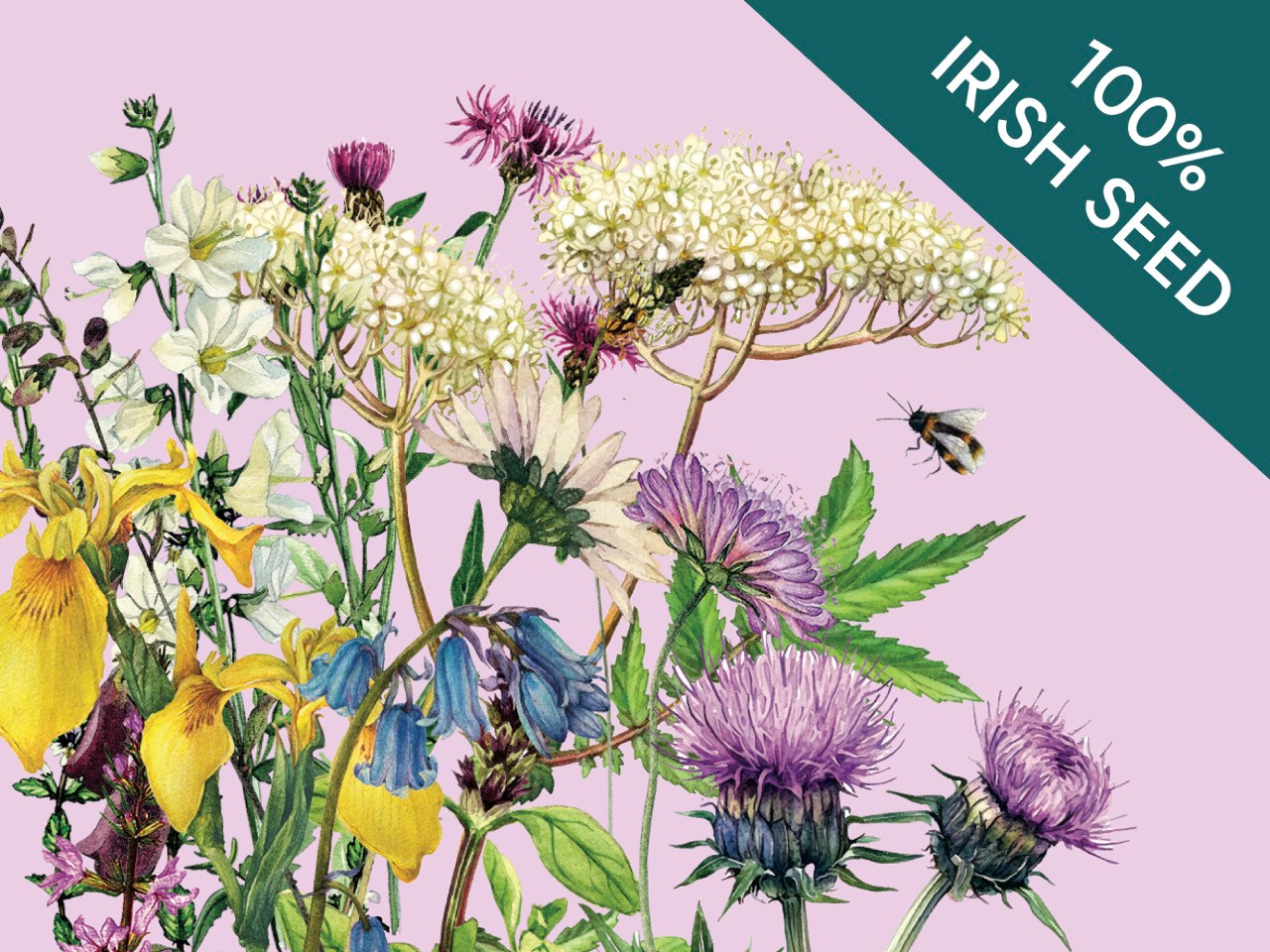
Native Irish Grown Wildflowers - Biodiversity Meadow
View ProductThe Threats Bees Face
It is estimated that 1 out of 10 bee species in Europe are under threat of extinction. In Ireland 5 out of 8 of our most common bumblebee species are in decline, including the Larger Carder bee and the White Tailed Bumblebee. ("Bumblebee Monitoring Scheme." Biodiversity Ireland, https://biodiversityireland.ie/surveys/bumblebee-monitoring-scheme/)
There is no single cause for this, but a number of factors likely contribute to the worrying decline.
Pesticide Use
Pesticides or herbicides can be harmful to bees in both direct and indirect ways. Synthetic compounds (such as neonicotinoids) can weaken bees’ immune systems, impair their navigation, or reduce their ability to forage effectively. Widespread weedkiller use can drastically diminish the availability of flowering plants, limiting food sources.
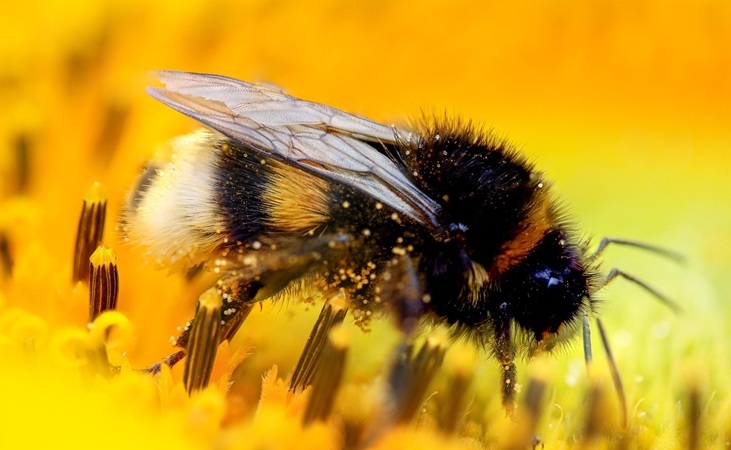
Combined exposure to both pesticides and herbicides, or chemical interactions between different compounds, can be even more harmful, in what's known as a 'synergistic effect'.
Habitat Loss
Urban development, intensive farming or changes in land use have dramatically reduced the availability of wildflower-rich meadows, hedgerows, and nesting sites. Where suitable habitats do exist they are often fragmented, when ideally a bee-friendly landscape should be interlinked (‘habitat connectivity’). As favourable habitat shrinks, bees struggle to find food or nesting and breeding spaces.
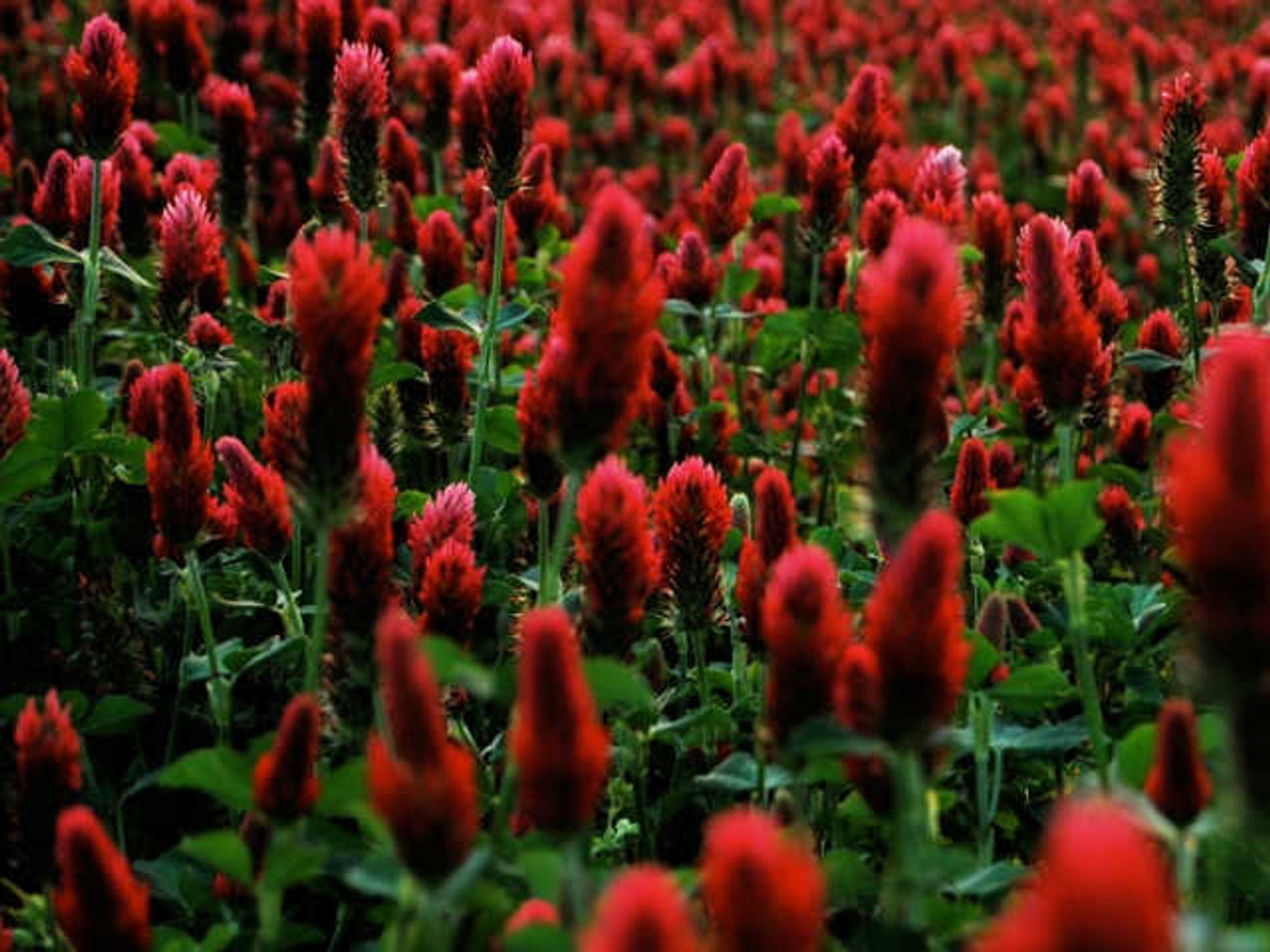
Green Manure Clover Kardinal
View ProductSpecialist pollinator species can be particularly affected by the loss of meadows which contain a diversity of wildflower species. These meadows are often lost to overgrazing or farming. It is estimated that the UK, for example, has lost 97% of its wildflower meadows since the 1930s (Cumbria Wildlife Trust, https://www.cumbriawildlifetrust.org.uk/pollinators)
Climate Change
Changing weather or temperature patterns can cause flowers to bloom earlier or later in the year than usual. This can disrupt the foraging patterns of some bees who are accustomed to the natural cycles of native flowers and plants.
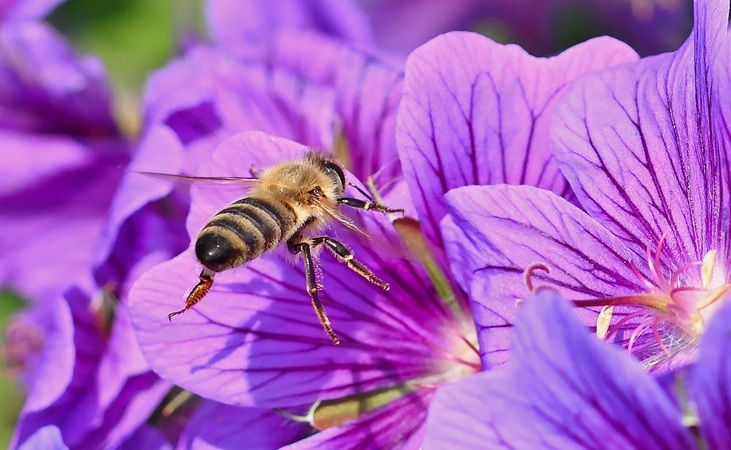
Periods of extreme weather or extended cold snaps can also limit the amount of time that bees spend outside their hives searching for food. What’s more, recent research indicated that heatwaves pose a serious threat to bumblebee hives, as the bees will struggle to thermoregulate the hive above certain temperatures.
Disease and Species Conflict
Man-made bee hives or hotels are well-intentioned, but they can inadvertently result in the spread of disease if they are poorly maintained.
There is also the issue of competition and conflict with other species. In Ireland and the UK, European honeybee (Apis mellifera) populations are generally stable, supported by both hobbyist and commercial beekeepers.
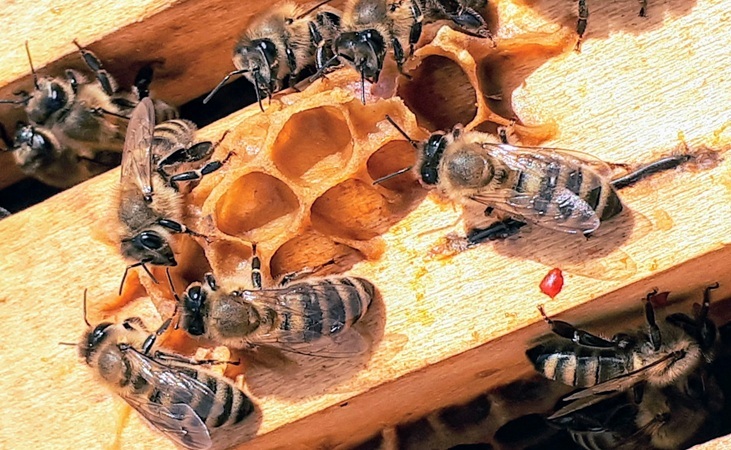
However, as honeybees outnumber solitary bees or bumblebees (as well as being more efficient foragers) they are at a considerable advantage when it comes to competing for food sources - particularly in areas with limited foraging opportunities. In urban environments honeybee dominance has become a real problem.
When it comes to bee-friendly gardening and conservation, we should be focusing our efforts on wild bees - many of whom are at risk of extinction - rather than honeybees (who are already well served by managed hives in commercial settings).
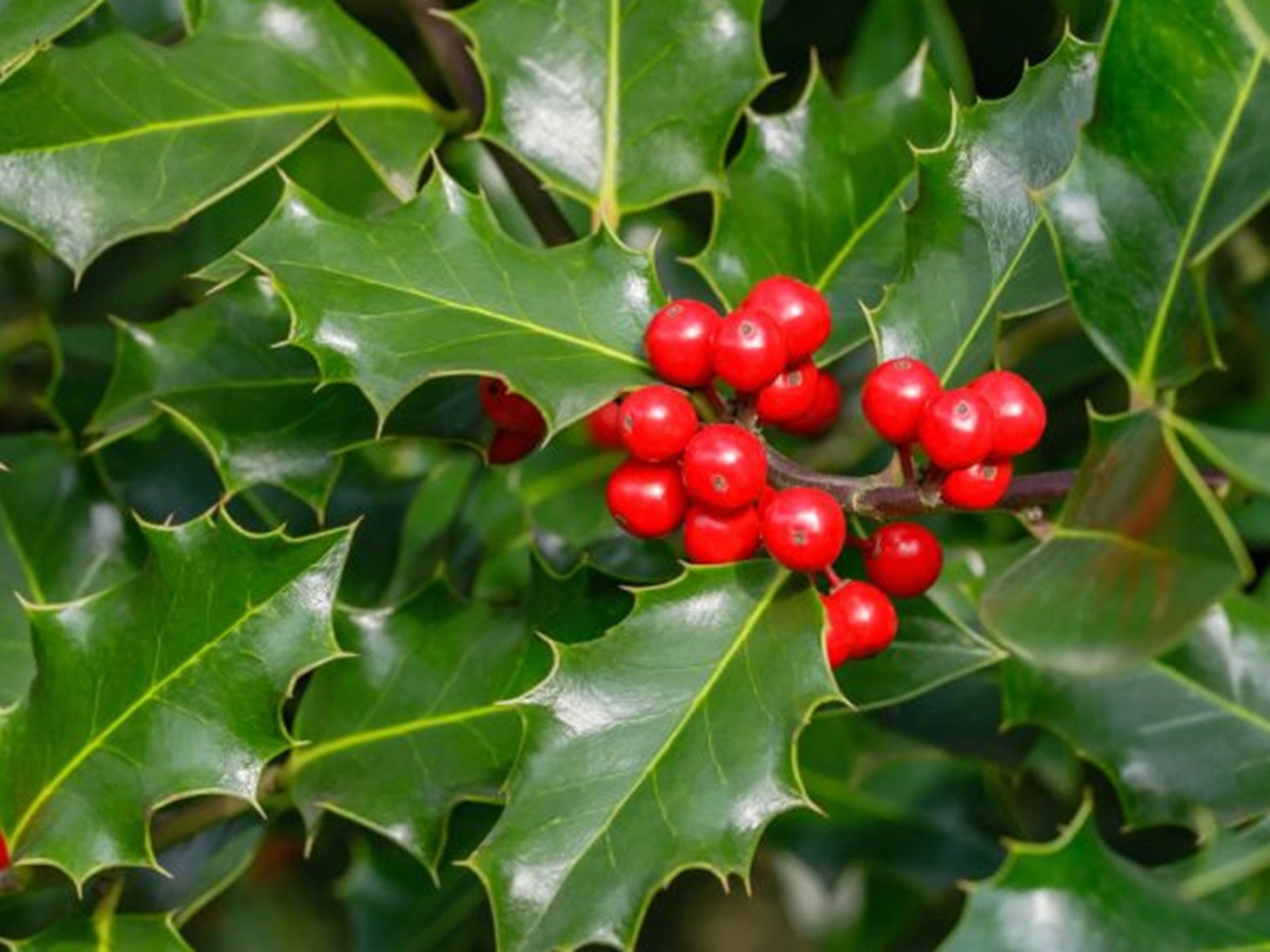
Green Holly - Ilex Aquafolium, 1-3 Pack
View ProductOn the other hand, the Asian Hornet has been in the news of late: this species is known for ‘bullying’ and preying on honeybees, so it goes to show that threats can come from unexpected sources.
Air Pollution
Bees rely heavily on floral scents to find flowers. It is believed that pollutants like ozone, nitrogen oxides, or particulate matter can chemically alter or break down these floral scent molecules, making it harder for bees to locate their favoured flowers. ("Why Air Pollution Matters to Pollinators." Natural England, https://naturalengland.blog.gov.uk/2022/07/21/bees-needs-why-air-pollution-matters-to-pollinators/)
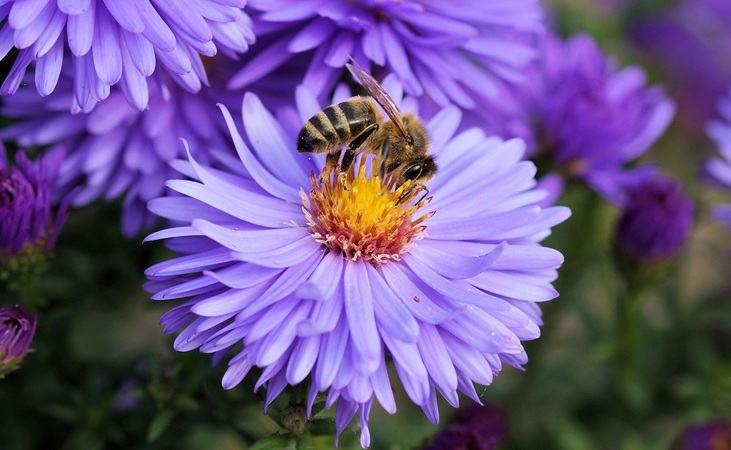
Bee Friendly Garden Tips
- Most insect pollinators rely solely on nectar and pollen as a source of food. For this reason it is vital that we encourage a diversity of wildflowers, natural hedging and so on.
- One of the best things you can do in early to late spring is resist the urge to mow your lawn: instead, allow bee-friendly wildflowers like dandelions or clover to bloom.
- Similarly, allow your garden hedging to flower instead of habitually pruning it. Look for info about the variety of hedging that grows in your garden and what time of year it flowers. Late autumn or winter flowering can be invaluable for some bee species.

Common Hawthorn Bare Root Hedging Plants
View Product- Avoid using pesticides or herbicides in your garden if at all possible. Although there have been positive moves made in terms of banning the most harmful pesticides out there, there is still much unknown about the effects that pest control products can have on bees and other pollinators - including sublethal effects like affecting their navigation.
- Of course, the act of killing weeds in itself removes potential food sources or habitat for pollinators. It is good practice to weigh how much hassle a particular ‘weed’ or plant is causing us against how much value it has for pollinators and wildlife.
- If you are using pesticides or herbicides, avoid using them when nectar-rich plants are in flower.
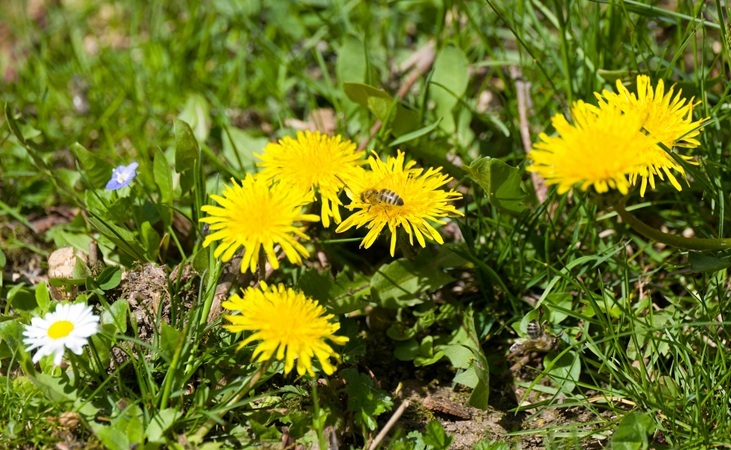
- Tubular or trumpet-shaped flowers can be a more reliable source of food in our damp climate (particularly if they are angled downwards), as this can protect the nectar from being diluted or washed away by rain.
- Look to plant varieties that flower in late autumn, winter or early spring. In midsummer nectar and pollen sources are more widespread and easier to find. Where you can become a life saver however is in the leaner months of the year, when there is little else about. Bees use mild periods in winter to forage for whatever is available; it is at these times that fresh supplies make all the difference. Good winter flowering plants include Viburnum tinus and Erica carnea (white heather).
- Plan your garden to have something in bloom throughout the year, from early spring crocuses to late autumn ivy or winter-flowering shrubs, so bees have a constant supply of food.
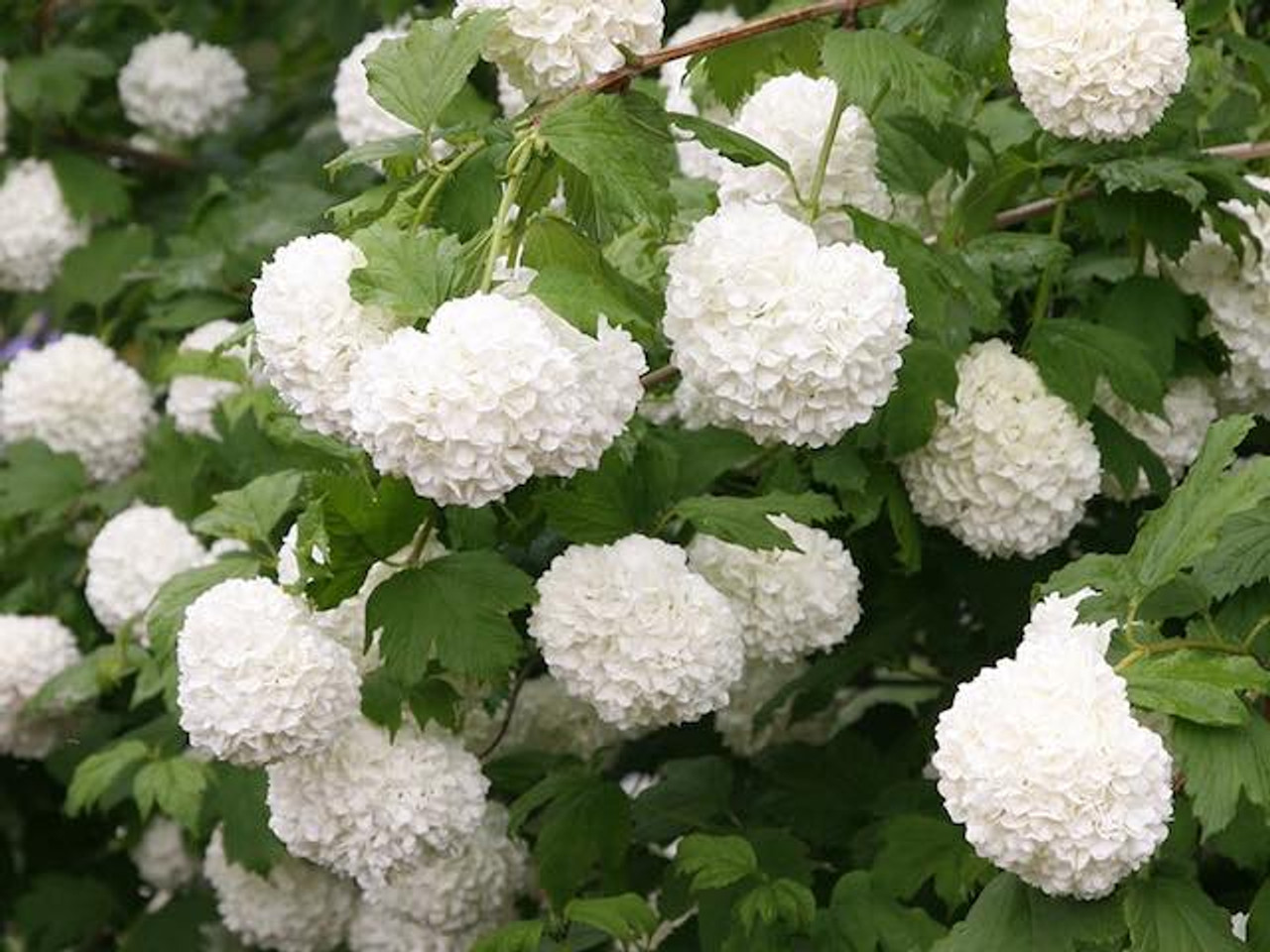
10 x Viburnum Opulus - Guelder Rose
View Product- Flowers with a long flowering period can be more useful than those with short ones. If bad weather keeps bees in the hive they might miss a crucial nectar-gathering opportunity.
- Bees need water for drinking as well as for cooling their hives in hot weather. Fill a shallow dish with fresh water and add stones or corks as landing spots. Place in a sunny, sheltered spot and refill regularly so it stays fresh.
- Some solitary bee species prefer to nest in the ground, so leaving a patch of bare soil undisturbed can provide a home for them. Piles of twigs and logs can create additional hiding places.
- Planting flowers in clusters makes it easier for bees to forage efficiently; from a distance they are more visible to pollinators.
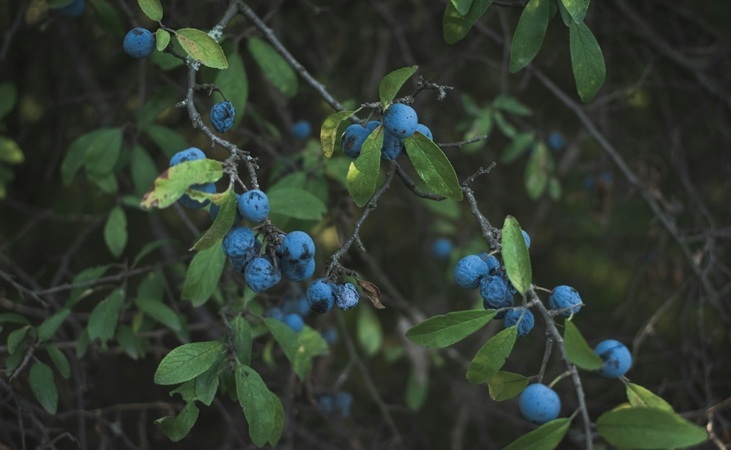
Hedging
Hedging provides the most value for bees when it’s allowed to flower (very important). Ivy is particularly beneficial as it flowers late in the year (September-November), but hawthorn and the early-flowering blackthorn will also provide nectar and pollen.
One way of compromising between providing habitat and keeping things neat is to cut back hedging on a 2 or 3 year rotation (this works very well with hawthorn, for example).
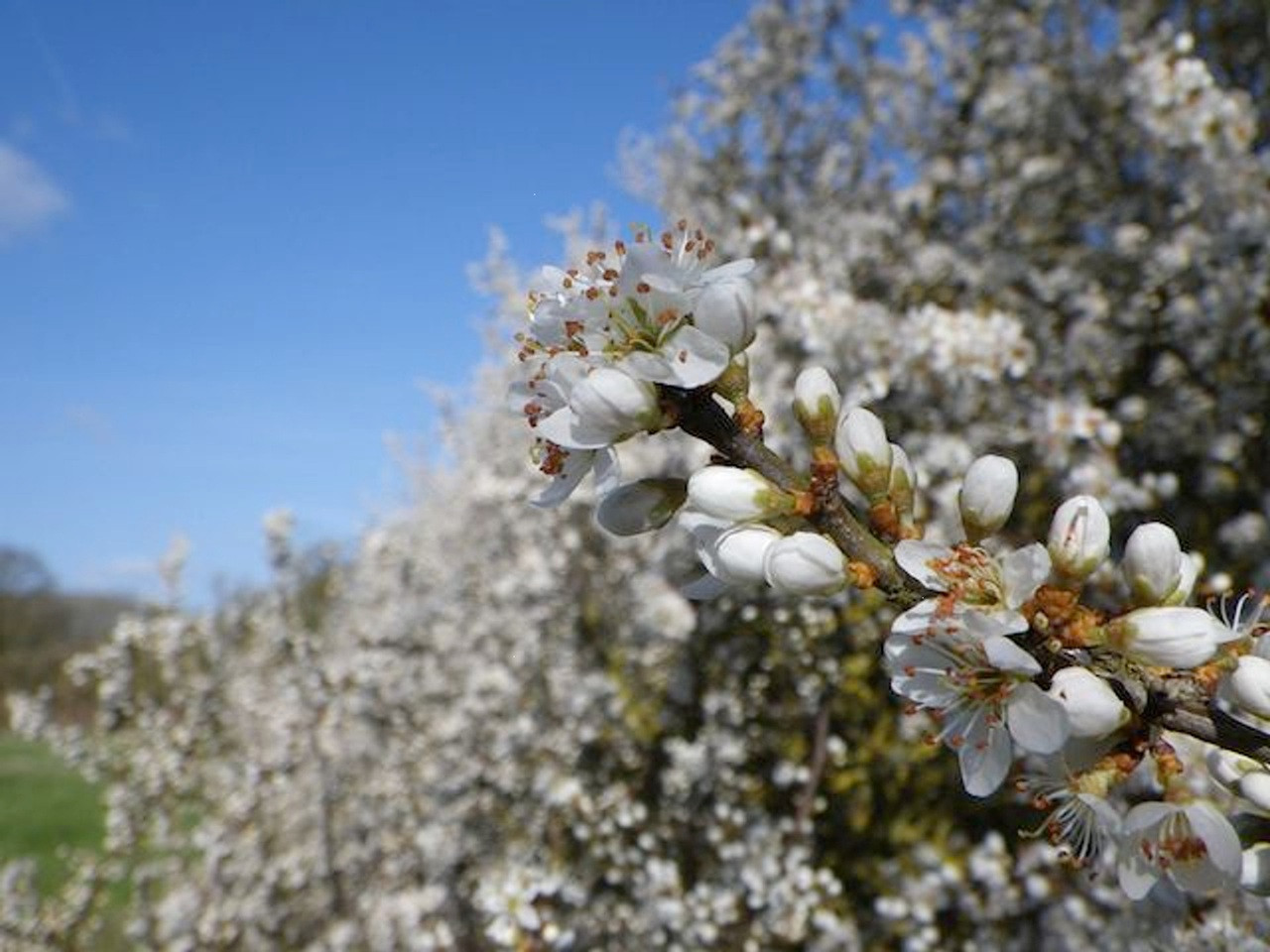
Blackthorn Bare Root Hedging Plants
View ProductBee Friendly Planting Suggestions:
Fruits:
- Apple
- Raspberry
- Blackberry
- Hybrid berries (such as tayberry, boysenberry and loganberry).
Trees & Shrubs:

Crab Apple - Malus Sylvesteris, 1-3 Pack
View ProductClimbers:
- Blackberry
- Ivy
- Dog Rose
Annual Flowers:
- Alyssum
- Borage
- Cosmos
- Forget-me-not
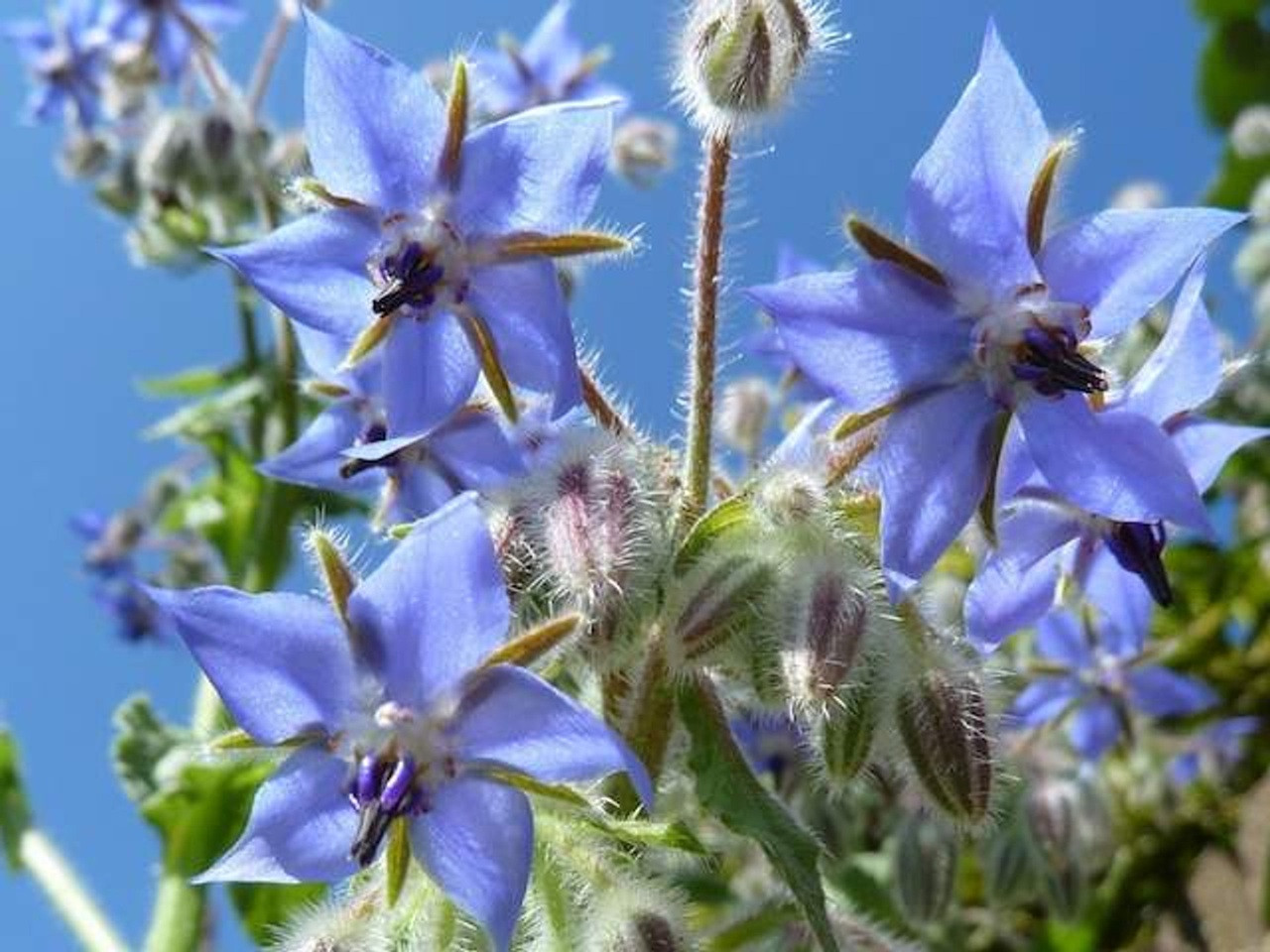
Borage Seeds
View ProductPerennial Flowers:
Herbs:
(Nearly all herbs will be useful when allowed to flower.)

Thyme Seeds
View ProductWildflowers:
(See full article here).
It's probably not the best photo in the world as I was just losing the evening sun but you can see a mat of pink geranium with purple catmint behind in my garden (below). The catmint (Nepeta 'Six Hills Giant') is always full of bees and has a very long flowering season.
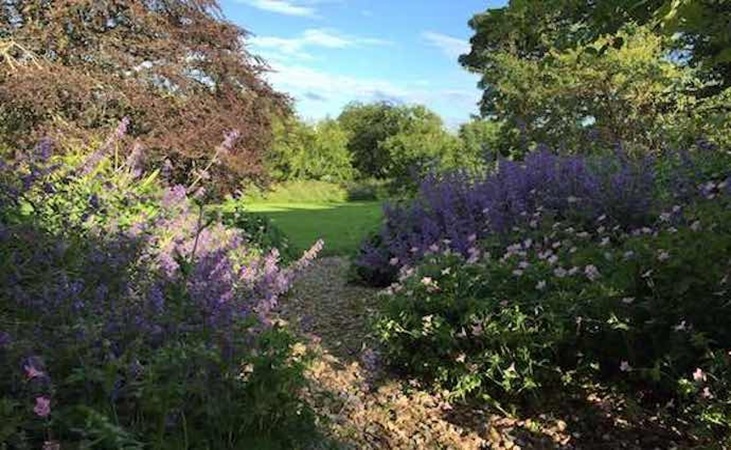
Case Study: the Large Carder Bee
The Large Carder Bee (or Moss Carder Bee as it’s also known) has experienced dramatic declines across Europe in recent decades. The species persists in Ireland, particularly in flower-rich coastal habitats, but has also undergone a significant decline here.
This bumblebee species emerges relatively late in the year, starting its colonies in May or June - which shortens its breeding window. Large Carders are also known as ‘doorstep foragers’, meaning that they prefer to visit flowers close to their nest, rarely travelling further than 500m. This makes them particularly vulnerable to habitat loss and fragmentation.
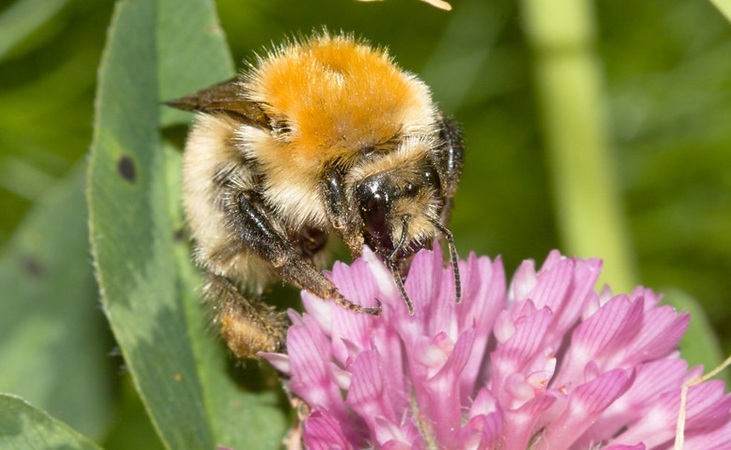
Some key methods of protecting the Large Carder bee include conserving tall, flower-rich grassland habitat where it exists, and establishing undisturbed nesting areas. From a gardener’s perspective, we can play an important role in terms of ‘landscape connectivity’ - or providing corridors between larger habitats. This is particularly valuable if you live near a suitable tall meadow habitat.
We can also provide food sources as they move through our gardens. Flowering plants that the Large Carder bee likes to feed on include:
Species such as the Large Carder bee are referred to as ‘doorstep foragers’, meaning that they prefer to visit flowers close to their nest, rarely travelling further than 500m. It’s important, then, that habitats aren’t fragmented - and we can all play a role in building accessible, nectar-abundant corridors for them to move around the landscape. ("Helping the Large Carder Bee in your Local Community." National Biodiversity Data Centre / All-Ireland Pollinator Plan, https://pollinators.ie/protecting-rare-pollinators-helping-the-large-carder-bee-in-your-local-community/ )
Bee Hives, Houses & Hotels
Solitary bees nest alone rather than in hives or colonies. Almost 80% of Ireland’s bee species are classified as solitary bees, including miner bees, leafcutter bees and mason bees. They are very important and industrious pollinators.
Solitary female bees lay their eggs in small holes or cavities and then seal them off with mud, leaves or resin. ‘Bee hotels’ are man-made structures that are designed to mimic the natural nesting sites of some solitary bee species.
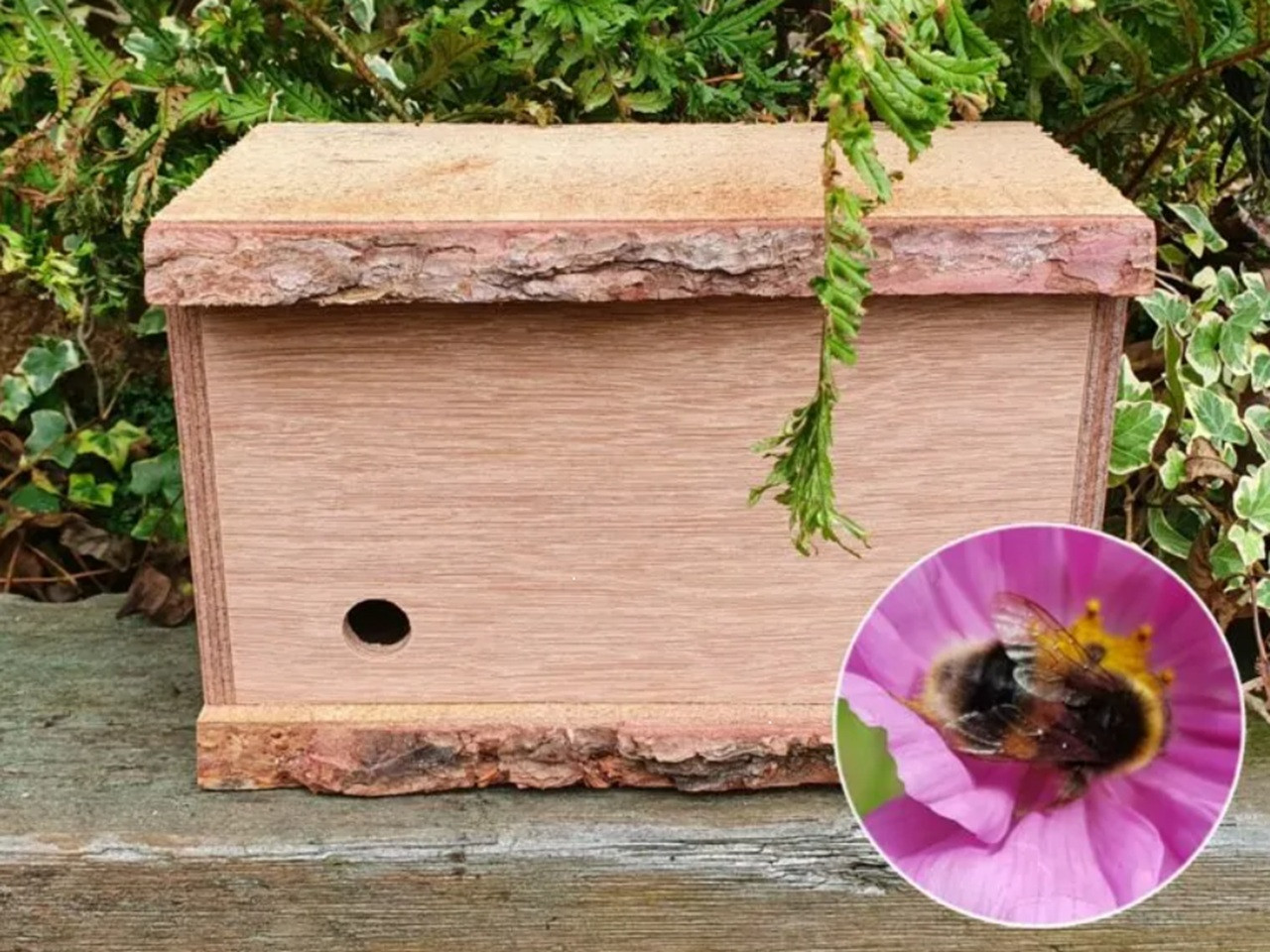
Bumble Bee Nest
View ProductYou can purchase a ready-made bee hotel or house, or you can DIY your own: they are commonly made with materials such as bamboo, timber or drilled logs.
If buying a bee hotel, research the brand. They should be relatively easy to maintain, which means that the tubes should ideally be removable - otherwise you’re really only going to get a couple of seasons out of them (and people will misguidedly leave them up longer, risking the spread of disease or parasites).
It’s important to note that these structures won’t attract all solitary bee species, many of whom prefer to nest among vegetation or in natural cavities.
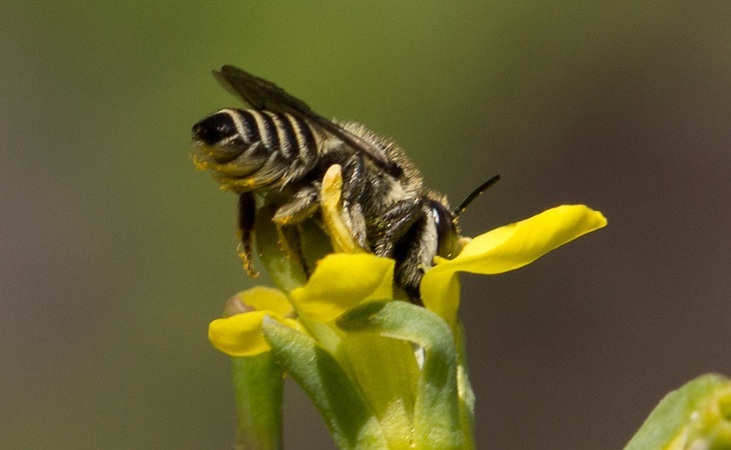
Bee Hotel Tips
- Place the structure in a sheltered, sunny spot, ideally facing south or southeast.
- Install at least 1 metre off the ground, securely fixed to a fence, wall, or post.
- Use untreated wood, bamboo, or paper inserts to create tubes or nesting hollows.
- Watch out for splinters, cracks or sharp edges, which can inadvertently injure bees and insects.
- A variety of hole diameters (say from 2-10 mm) is recommended to accommodate different species.
- Avoid using plastic, metal or synthetic materials, which can trap moisture or lead to overheating.
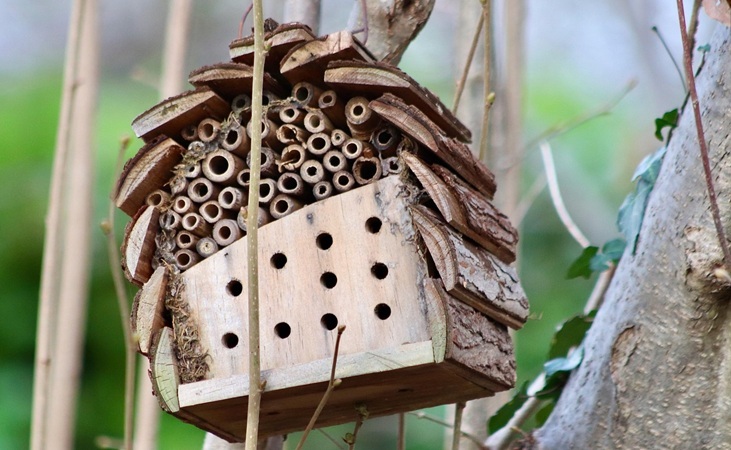
- Ensure the back of each tunnel is closed, as open-ended tubes can encourage parasites or predators.
- Clean or replace nesting materials every 1 or 2 years to prevent any buildup of mould or parasites.
- Removable paper or cardboard liners can make it easier to keep your bee hotel clean and dry.
- An overhanging or sloped roof protects against rain, which can otherwise lead to dampness within the nesting tubes.
- Natural materials such as mud, clay or leaves can provide solitary bees with the raw materials to seal their nests.
- Remember that many solitary bees are ‘doorstep foragers’, so look to provide them with nearby sources of nectar and pollen.
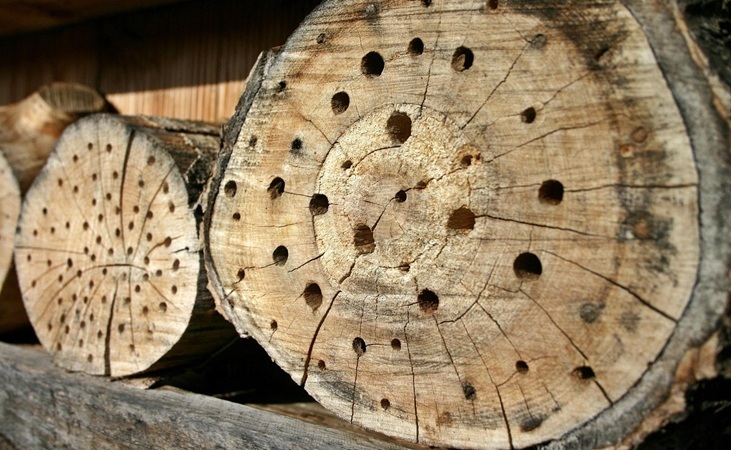
A simple and effective alternative to your typical bee hotel design is to take a timber block and create a series of small holes of different sizes. One advantage of this is that you can replace the timber block every year and not worry so much about maintaining it.
For solitary bees with different nesting habits, you can leave a pile of perennial cuttings somewhere in your garden - which will provide natural cavities to nest in - or leave patches of bare dirt for ground nesting species.
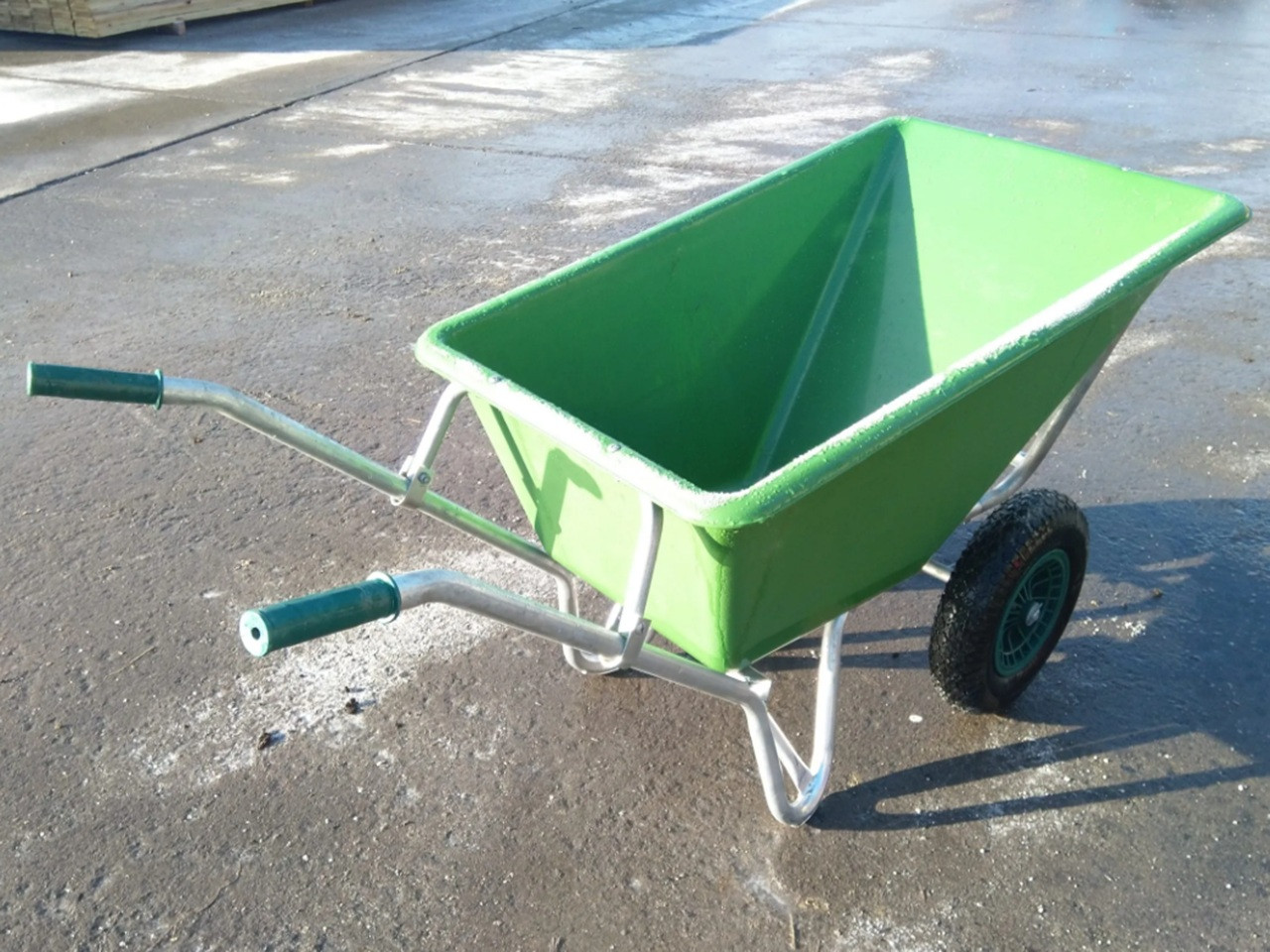
Hercules 160L Double-Wheeled Wheelbarrow
View ProductIf you have any sloping banks outdoors, you can create what’s known as a ‘bee scrape’ by removing excess vegetation and leaving the soil bare. Approximately 80% of solitary bee species in Ireland are ‘miner bees’, meaning that they burrow into areas of exposed soil to nest - particularly sheltered, south or east-facing banks. "Solitary Bees: a New Free Poster." National Biodiversity Data Centre, https://pollinators.ie/solitary-bees-a-new-free-poster/
In conclusion, there is a lot that we can do for the bees as gardeners. We should be wary of eliminating their food sources for the sake of tidiness, and we should also keep in mind that wild bees (e.g. solitary bees and bumblebees) need our help more than honeybees do. By doing our bit for bee conservation, they will return the favour by pollinating fruit and vegetable crops, enhancing garden biodiversity - and generally just adding to a pleasant, vibrant garden ambience as they quietly go about their business.
Citations:
"Farmland Habitat: Bees" Tegasc, https://teagasc.ie/environment/biodiversity-countryside/farmland-habitats/bees/

